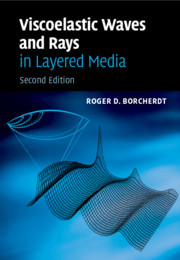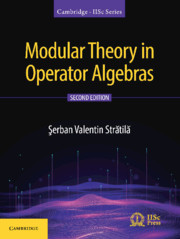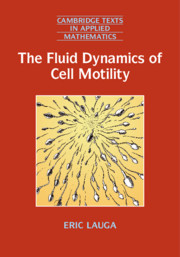Refine search
Actions for selected content:
8126 results in Fluid dynamics and solid mechanics
1 - One-Dimensional Viscoelasticity
-
- Book:
- Viscoelastic Waves and Rays in Layered Media
- Published online:
- 17 October 2020
- Print publication:
- 22 October 2020, pp 1-18
-
- Chapter
- Export citation
4 - Framework for Single-Boundary Reflection-Refraction and Surface-Wave Problems
-
- Book:
- Viscoelastic Waves and Rays in Layered Media
- Published online:
- 17 October 2020
- Print publication:
- 22 October 2020, pp 98-106
-
- Chapter
- Export citation

Viscoelastic Waves and Rays in Layered Media
-
- Published online:
- 17 October 2020
- Print publication:
- 22 October 2020

Modular Theory in Operator Algebras
-
- Published online:
- 16 October 2020
- Print publication:
- 03 December 2020
Copyright page
-
- Book:
- Rigid Body Kinematics
- Published online:
- 26 August 2020
- Print publication:
- 10 September 2020, pp iv-iv
-
- Chapter
- Export citation
Index
-
- Book:
- Rigid Body Kinematics
- Published online:
- 26 August 2020
- Print publication:
- 10 September 2020, pp 283-286
-
- Chapter
- Export citation
Preface
-
- Book:
- Rigid Body Kinematics
- Published online:
- 26 August 2020
- Print publication:
- 10 September 2020, pp vii-x
-
- Chapter
- Export citation
Contents
-
- Book:
- Rigid Body Kinematics
- Published online:
- 26 August 2020
- Print publication:
- 10 September 2020, pp v-vi
-
- Chapter
- Export citation
2 - Point Kinematics
-
- Book:
- Rigid Body Kinematics
- Published online:
- 26 August 2020
- Print publication:
- 10 September 2020, pp 54-113
-
- Chapter
- Export citation
3 - Rigid Body Kinematics
-
- Book:
- Rigid Body Kinematics
- Published online:
- 26 August 2020
- Print publication:
- 10 September 2020, pp 114-223
-
- Chapter
- Export citation
1 - Space and Time
-
- Book:
- Rigid Body Kinematics
- Published online:
- 26 August 2020
- Print publication:
- 10 September 2020, pp 1-53
-
- Chapter
- Export citation
4 - Introduction to Kinematics of Multibody Systems
-
- Book:
- Rigid Body Kinematics
- Published online:
- 26 August 2020
- Print publication:
- 10 September 2020, pp 224-282
-
- Chapter
- Export citation

The Fluid Dynamics of Cell Motility
-
- Published online:
- 09 September 2020
- Print publication:
- 05 November 2020
Author Index
-
- Book:
- A Gallery of Combustion and Fire
- Published online:
- 17 June 2020
- Print publication:
- 03 September 2020, pp 176-178
-
- Chapter
- Export citation
6 - Fires
-
-
- Book:
- A Gallery of Combustion and Fire
- Published online:
- 17 June 2020
- Print publication:
- 03 September 2020, pp 140-175
-
- Chapter
- Export citation
3 - Internal Combustion Engines and Gas Turbines
-
-
- Book:
- A Gallery of Combustion and Fire
- Published online:
- 17 June 2020
- Print publication:
- 03 September 2020, pp 55-73
-
- Chapter
- Export citation
Introduction
-
-
- Book:
- A Gallery of Combustion and Fire
- Published online:
- 17 June 2020
- Print publication:
- 03 September 2020, pp 1-3
-
- Chapter
- Export citation
Contents
-
- Book:
- A Gallery of Combustion and Fire
- Published online:
- 17 June 2020
- Print publication:
- 03 September 2020, pp v-vi
-
- Chapter
- Export citation
4 - Low-Gravity Flames
-
-
- Book:
- A Gallery of Combustion and Fire
- Published online:
- 17 June 2020
- Print publication:
- 03 September 2020, pp 74-106
-
- Chapter
- Export citation
Subject Index
-
- Book:
- A Gallery of Combustion and Fire
- Published online:
- 17 June 2020
- Print publication:
- 03 September 2020, pp 179-184
-
- Chapter
- Export citation
